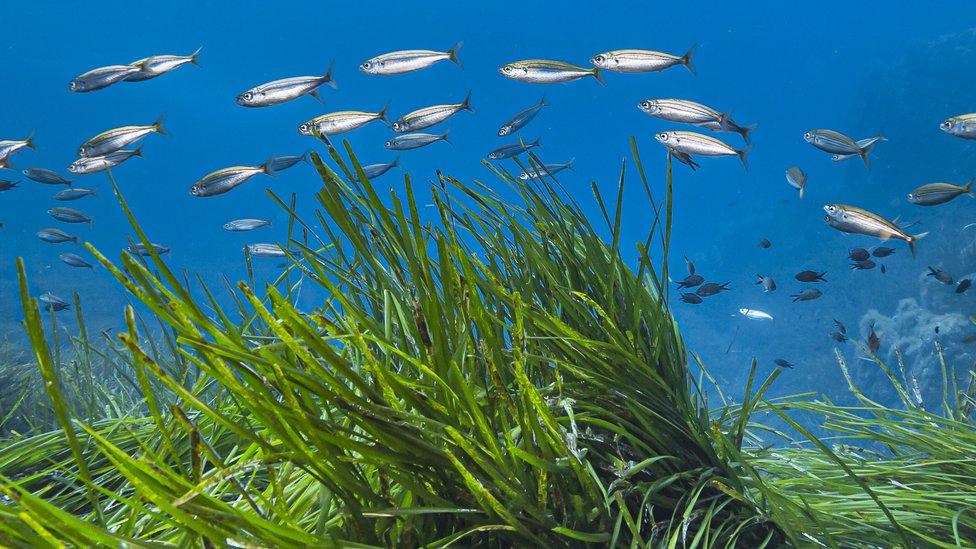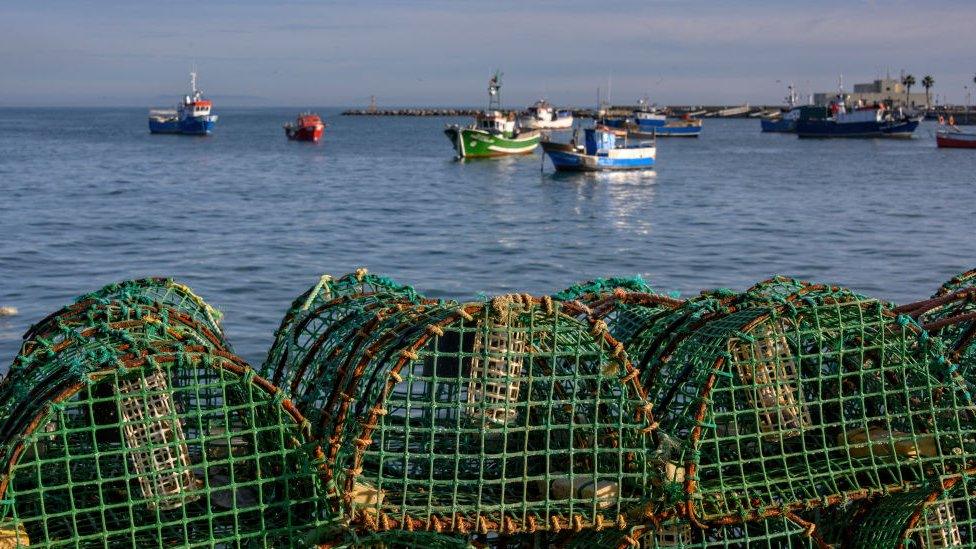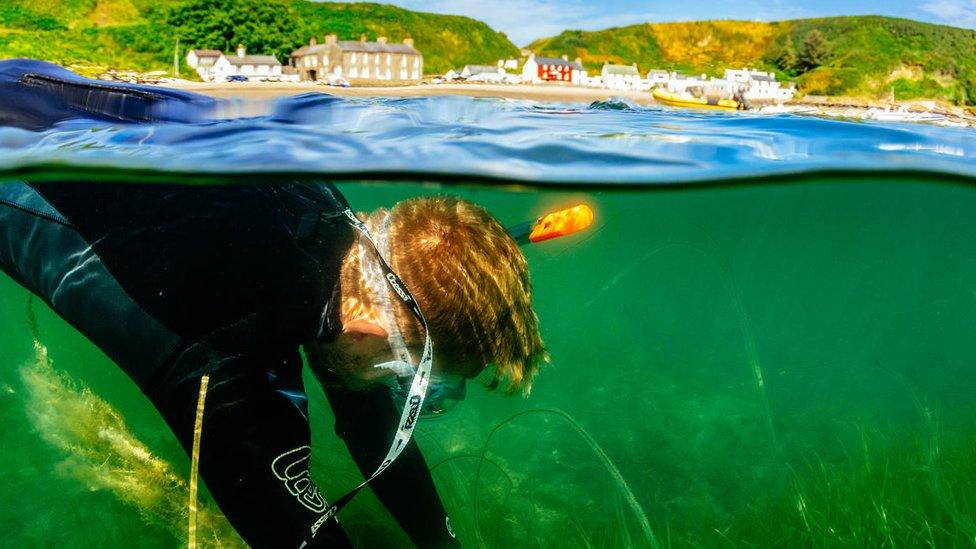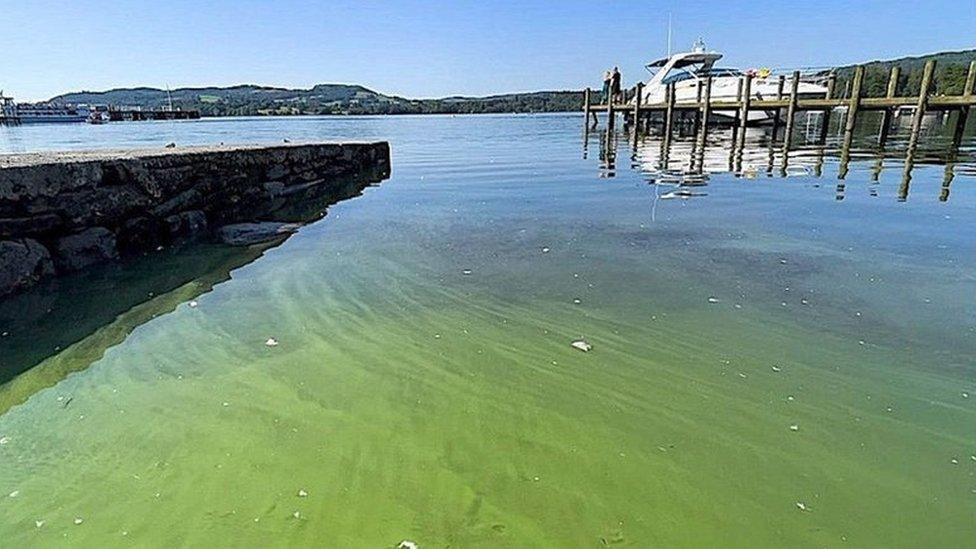How is seagrass in Wales helping fight climate change?
- Published
Shanequa finds out more about the climate change fighting super plant!
The UK's biggest seagrass restoration project is underway off the Llŷn Peninsula, in North Wales.
Seagrass is very important for our planet because it absorbs huge amounts of carbon dioxide - a gas which is a big cause of climate change.
In fact, seagrass takes in carbon dioxide up to 35 times faster than tropical rainforests.
The Seagrass Ocean Rescue project is helping to restore areas of seagrass off Gwynedd and Anglesey where seagrass has been damaged by boats, tourism and pollution.

Seagrass isn't just important in fighting climate change - it protects marine life too
Seagrass grows across the seabed in underwater meadows.
The meadows provide shelter and homes for wildlife - 1,000 square metres can house up to 8,000 fish and 10 million invertebrates, according to Seagrass Ocean Rescue.
Seagrass also absorbs and stores huge amounts of carbon dioxide by drawing it from the water and storing it in the plant structure and seabed - making it a key tool in fighting climate change.
Carbon dioxide is a huge contributor to global warming - it traps heat from the Sun and warms up the Earth. This is called the greenhouse effect.
Healthy meadows could help tackle the climate and nature crisis, and are essential for providing biodiversity.
Why are seagrass meadows so badly damaged?

Fishing boats fixed to the seabed using chains can damage seagrass meadows
The UK has lost up to 92% of its seagrass in the last century.
The damage has been caused by issues such as pollution, development and building near the sea and damage from swinging chain moorings - when boats are fixed in one place by a chain to the seabed.
Project leader Dr Richard Unsworth, of Swansea University said: "It is not that we can blame one person, industry or organisation, it's the growth of a population around the coast.
"Planting seagrass is an opportunity to reverse that loss and start to kick into action a recovery for our seas around the UK."
What are the team doing?

A diver plants the new seagrass into the seabed off the coast of Wales
Five million seagrass seeds are being planted off the Llŷn Peninsula in Gwynedd and Anglesey, in North Wales, with the aim of creating 10 hectares (100,000 sq metres) of seagrass meadow by the end of 2026.
By harvesting seeds from existing meadows of seagrass, the conservation workers can plant and grow more underwater meadows.
The World Wildlife Fund (WWF) are working with the charity Project Seagrass, Swansea University, North Wales Wildlife Trust and Pen Llŷn a'r Sarnau Special Area of Conservation.
Alec Taylor from the World Wildlife Fund (WWF) said: "We see seagrass as this wonder plant because of its ability to fight climate change, to help fish stocks, coastal communities and livelihoods."
Those running the project hope that local communities will join the efforts to help the sea beds thrive by using the sea in an environmentally-friendly way, protecting the area in which they live for future generations to come.
- Published23 September 2022
- Published19 August 2022

